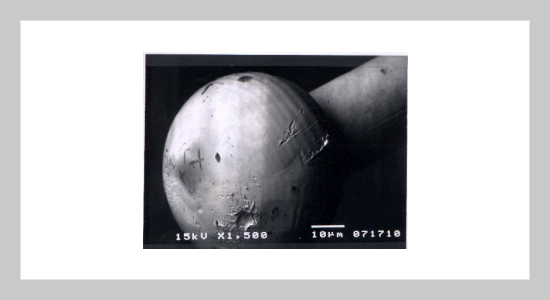Kuan-Jung Chung This email address is being protected from spambots. You need JavaScript enabled to view it.1 , Joseph B. Bernstein1 and Liyu Yang2 1Department of Mechanical Engineering University of Maryland College Park, MD 20742, U.S.A.
2Intel Corporation, Sacramento, CA, U.S.A.
Received:
January 19, 2003
Accepted:
February 10, 2003
Publication Date:
March 1, 2003
Download Citation:
||https://doi.org/10.6180/jase.2003.6.1.06
In the latest generation of wire bonders, the bond cycle is so short that the ward electrode of the electronic flame off (EFO) discharge used to heat and melt the wire is fixed to side. Because no more than a few ppm defects in ball bonds can be tolerated, any tiny factor such as the EFO ward electrode wear and surface pollution which effect the ball formation will be concerned. In this paper, the EFO ward electrodes of different wear rates and surface pollution were set up to wire bonder and then performed bonding processes. Two typical methods, wire pull and ball shear tests, were used to judge the wire bonding quality. From the experimental results, wire bonding quality descend when the EFO ward electrode wore and surface was polluted. The lowest wire pull and ball shear value have approached to actual production lines standards, and some even lower than specification. It is concluded if EFO ward electrode wear is controlled by adjusting discharge gap and cleaning the surface of electrode regularly, wire bonding quality will not get worse. Therefore a multi-function detectable tool is successfully designed not only to check up the wear and lifetime of electrode, but also to clean its surface. The solution was lately executed in actual production lines, and had been proved effectively.ABSTRACT
Keywords:
EFO Ward Electrode, Wire Bonding, Wire Pull and Ball Shear Tests, Wear, Surface Pollution
REFERENCES









